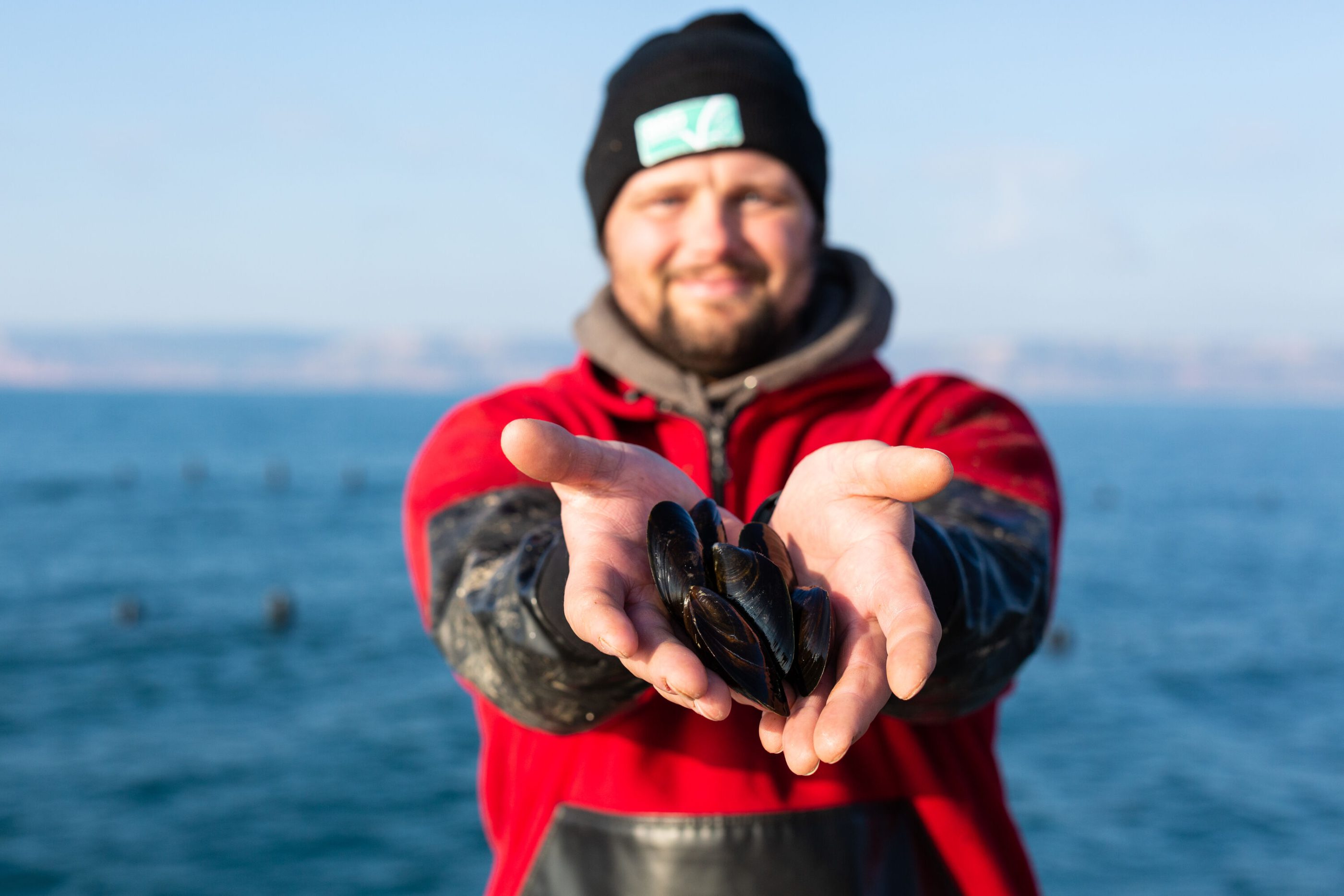
Five Things We Saw at an ASC Certified Salmon Farm in Norway
October 5, 2017
Consumers all over the world love salmon. Some of it comes from salmon farms along the coastlines of Norway. You might have seen some documentaries on the salmon industry – including some that criticise how farmed salmon is produced.
That is why we invited a handful of journalists from various European countries to come visit an ASC certified salmon farm close to Alesund in Norway. During the trip, they got first-hand insight into the operations of a farm that adheres to the ASC Salmon Standard.
This is what we found:

This worker in the control room is not playing games on his PlayStation – as the remote control could make you think. Far from it. He uses the control to steer an underwater camera. That way he observes the eating behaviour of the fish, making sure the fish does not get too much feed and the seabed below the farm stays healthy. Contrary to what some critics may say, when an operation is run responsibly, open cage culture does not have a negative impact on the seabed. And, with careful monitoring, feed wastes and pollution and other associated issues, including bethnic impacts, can be reduced.

Wondering what this boat is doing? It is transporting divers while they inspect and clean the nets. That is important work to make the nets remain strong to prevent escapes and that too much waste and materials that could potentially degrade the structure haven’t accumulated on the net. Nowadays, many salmon farms use cleaner fish to eat sea lice off the salmon – one of several ways to treat sea lice without medication. But you need to make sure your nets are clean – otherwise the small lumpsuckers feed on the foul on the net, and not the parasites on the fish.

The feed storage area is located in the basement of the farm’s control platform. . “Looks like the feed in my aquarium” stated one journalist. The exact details of the formula is, of course, a secret, but we do know this : Only 20% of the feed on an ASC certified farm comes from marine sources (fish meal and fish oil); holding the proportion of marine ingredients at this level relives pressure on wild fish stocks. . Some brave ones even tasted it. It was a bit salty – and definitely not as good as the salmon filet we had for dinner.

See the jumping salmon? Standing at the edge of a cage, you can watch them coming out of the water. Salmon need to jump at least every 24 hours in order to fill their swim bladder with air. Otherwise, salmon cage looks rather placid and roomy. . And the impression is correct. Of the volume of a cage, 97.5% must be water and more than 2.5% is fish – according to Norwegian legislation. This ensures fish have space to swim around – and jump.
Last, but not least, we also discussed the issue of antibiotics since it is perceived by consumers as a major issue in fish farming. In response to those concerns, salmon farmers in Norway took decisive action. For years, producers have been vaccinating the baby salmon – which has almost eliminated the need to use any antibiotics. Currently, less than one percent of all farmed salmon is treated with antibiotics in Norway



